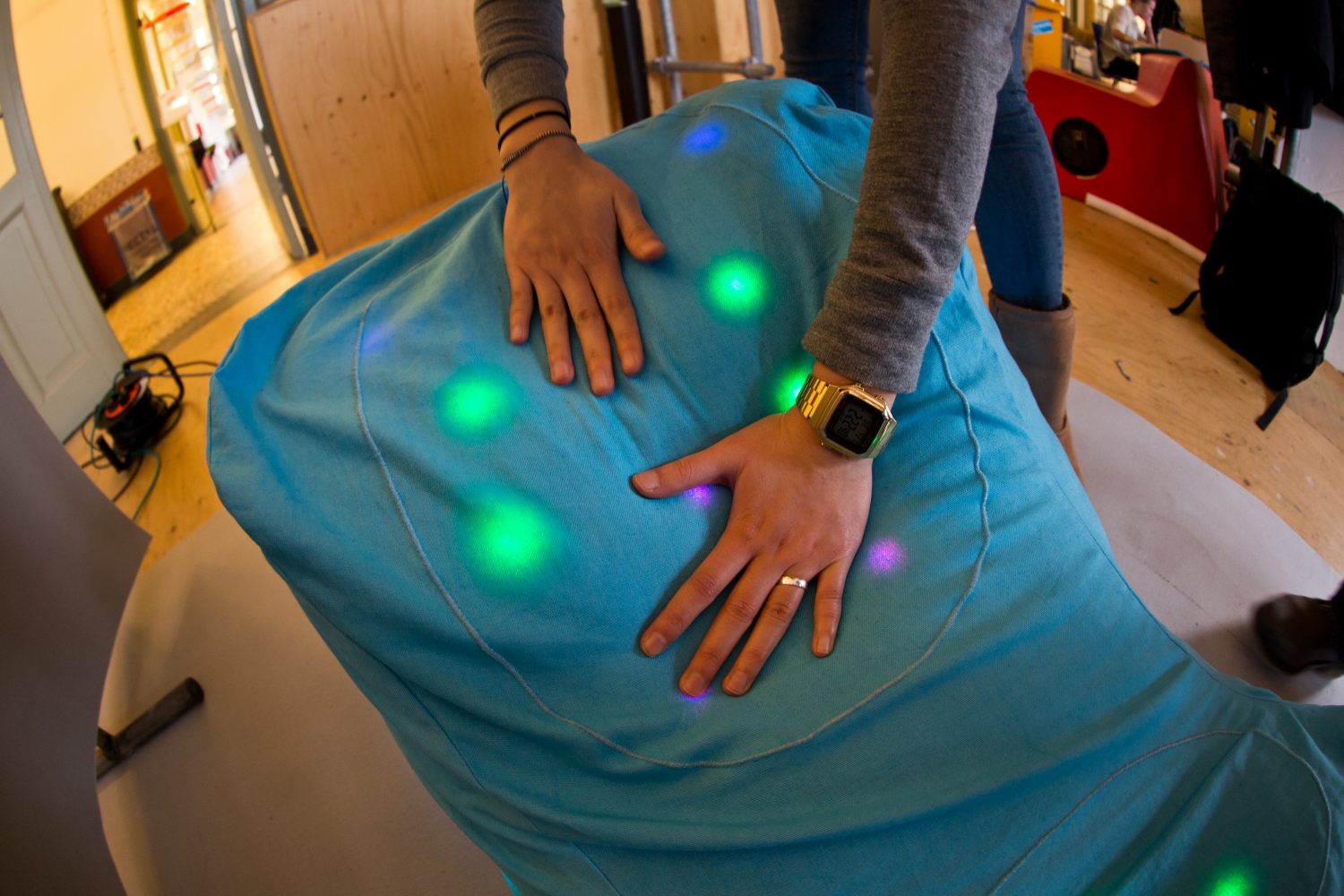
Ditto
Ditto is an interactive installation developed within the minor Interactive Environments of the Technical University of Delft. The project is commissioned by the Princess Máxima Centre for Paediatric Oncology (or in Dutch, Prinses Máxima Centrum voor Kinderoncologie), which will be newly built in Utrecht. A problem that we found in the lives of the families when the child is hospitalized is the difficulty of staying in touch with each other when geographically separated. That’s why we wanted to help hospitalized children (4-10 years old), their parents, and their siblings to be able to stay connected over a distance. Our goal is to communicate presence and intimacy felt among family members. So we’ve created the Dittos: a pair of interactive beanbags that create an environment of intimacy through touch, light, and warmth, exploring beyond the digital experience of long-distance communication.
Students: Isabelle Kim, Bob Verheij, Elan Redekop van der Meulen, Mithun Martin Mendez, Bo Gall, Bart Krijgsman and Gwenda Gieseler.
Coaches: Aadjan van der Helm, Marco Rozendaal and Chris Kievid.
Scenario
As soon as a child needs to stay in the hospital for a week or longer, they will get a Ditto, which their parents or siblings can place somewhere in their home. To make sure that they will handle the Ditto with care, they will have to pay a small deposit. Another Ditto is already in the patient room, waiting for its next child patient. Once the Ditto’s are placed on their intended location, they can accomplish their task.
When there is sound near one Ditto, the other Ditto will show this with a pulsing light line at the bottom of the Ditto. If there are people at home near the Ditto, for example, the noise they make will be sensed by the child in the patient room through his/her Ditto’s ambient light, receiving an idea of the activity in the other room. They can actually see that there is someone around the other Ditto making sound.
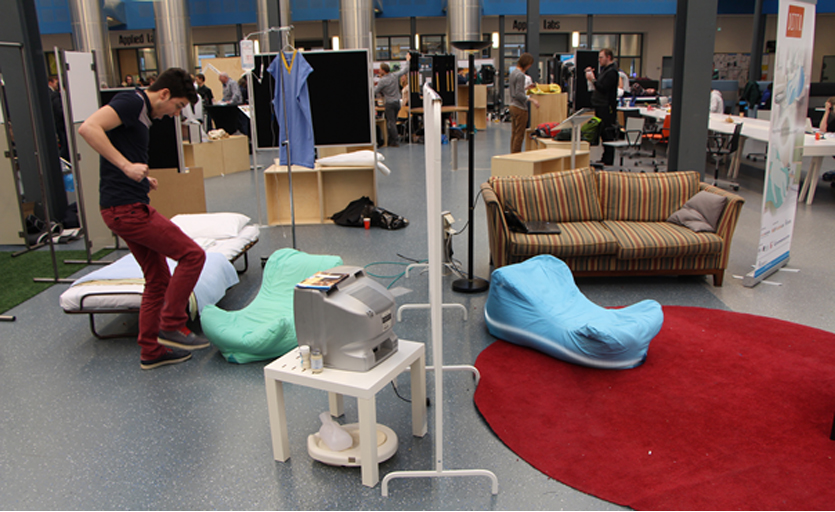
When someone is sitting down on one of the Dittos, his/her silhouette will be seen on both of the Ditto’s through a light silhouette in the color of the Ditto that is touched. When the other person sees this silhouette, it could be an invitation to also sit down at his/her Ditto.
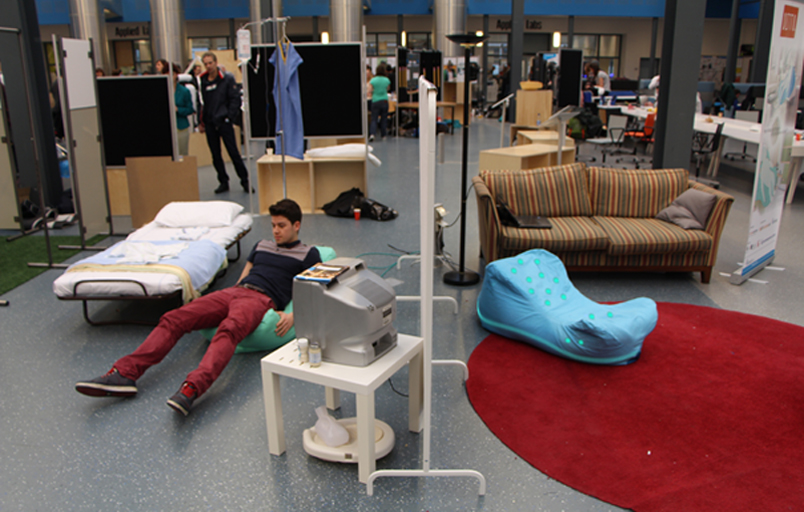
If the other person also decides to sit down, something special will happen. First of all, the color of the silhouettes turns to red. Also, both of the Ditto’s will become warm in the back and in the seat, so that the users can feel each other’s warmth and have an intimate connection to each other. Thanks to this connection, they can feel each other’s presence despite of the distance.
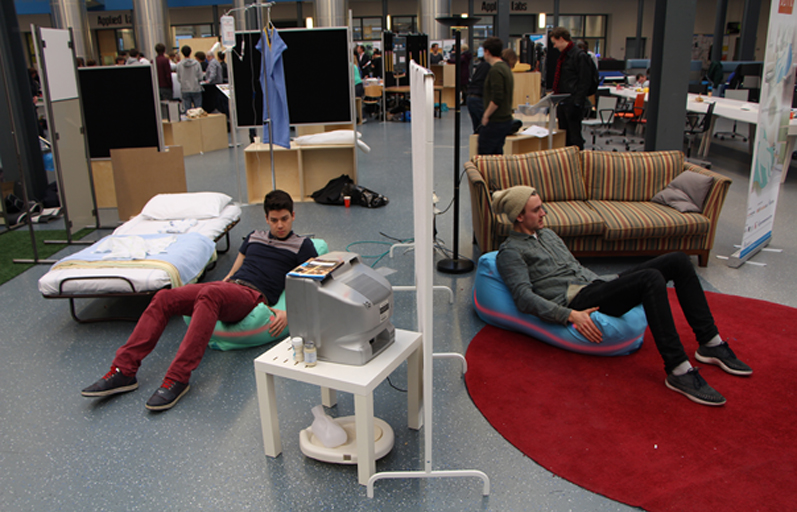
To give the users the possibility to have a more active interaction with each other, we created the hand patches. Indicated with a texture, there is a special area on both sides of the Dittos where the users can interact with their hands. The areas act the same way as the back and seat: they light up when they are touched, and become red and warm up if they are touched on both Dittos. The value of this area is that they are visible while sitting on the Ditto and that it can also be used more playfully.
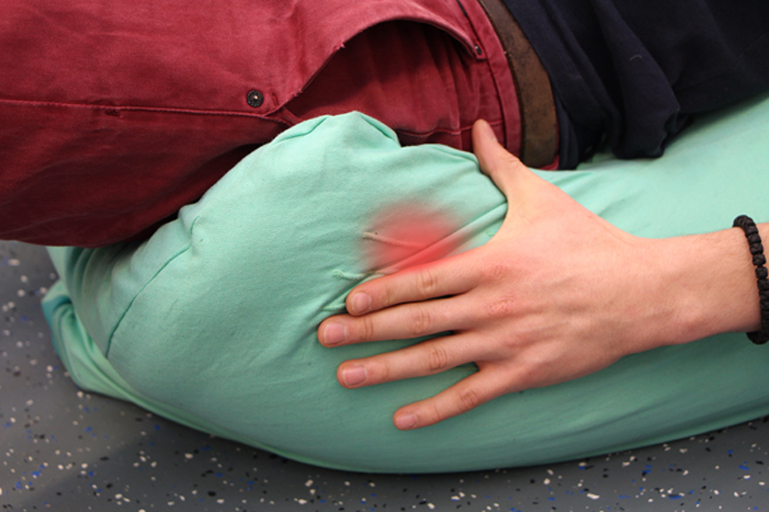
While having this intimate connection through bodily warmth, the users can do shared activities, like watching the television or having a phone call with each other. This way we can give the separated family still the feeling that there are together and they are still doing the same things together as they have been doing so far.
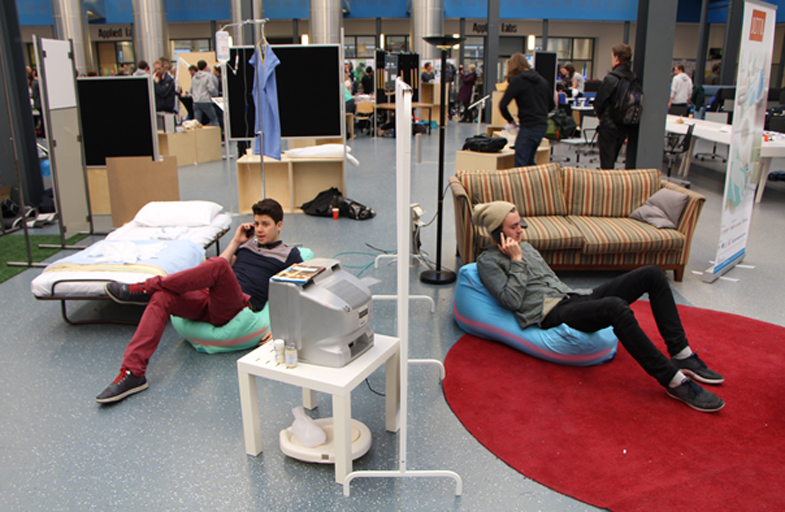
User Testing
To make the best out of the Ditto, we’ve done several user tests. Thanks to children, fellow students and external experts who participated, we came to the following conclusions:
- Assign the colors of the silhouette to the colour of the Ditto.
- Decrease the warmth of the heating pads.
One of our goals of the user testing was to see if the children really get an idea of presence. The follwing quotes of the children prove that they do understand it and that they liked it a lot.
- “Ze is er nu omheen aan het lopen.”
“She’s now walking around it.” - “Als hij knippert, zit niemand erop.”
“When it’s pulsing, nobody is sitting on it.” - “Het is blauw als er maar één persoon zit.”
“It’s blue when one person is sitting down.” - “Als ik ga zitten, gaat hij bij haar aan.”
“When I sit down, hers will light up.” - “Lekker zacht!”
“Nice and soft!” - “Lekker warm, ik blijf liggen.”
“The warmth is nice, I’ll stay in.” - “Je voelt wat de ander voelt, je bent eigenlijk één lichaam.”
“You feel what the other person feels, you’re actually one body.” - “Ik wil er één!”
“I want one!”

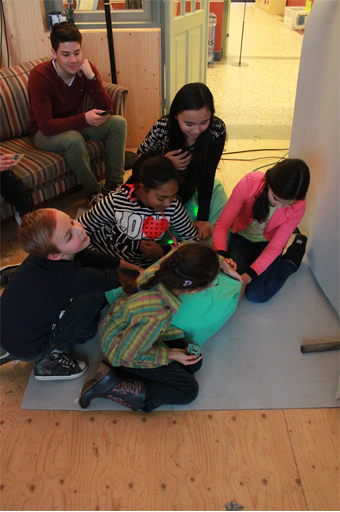
The Making of
To create a pair of fully working prototypes we’ve had quite a struggle. We’ve been going through power problems, a broken sewing machine, bugs caused by weak soldering, broken LEDs, tears in the beanbag and, again, broken LEDs. Despite of all the frustration that arose during the process we’ve managed to make everything work just in time.
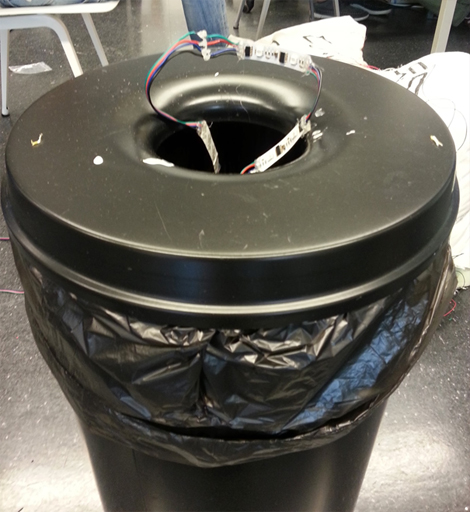
The most inner layer of the Ditto serves as the base for all the electronics, which are sewn onto it. The layer is made of unbleached cotton, which we chose for its flexibility, strength, low price and easy accessibility.
This layer also contains the core filling of the Ditto, which are basic beanbag balls. These balls are lightweight, small, frictionless, cheap, easily accessible and have a high rebound rate.
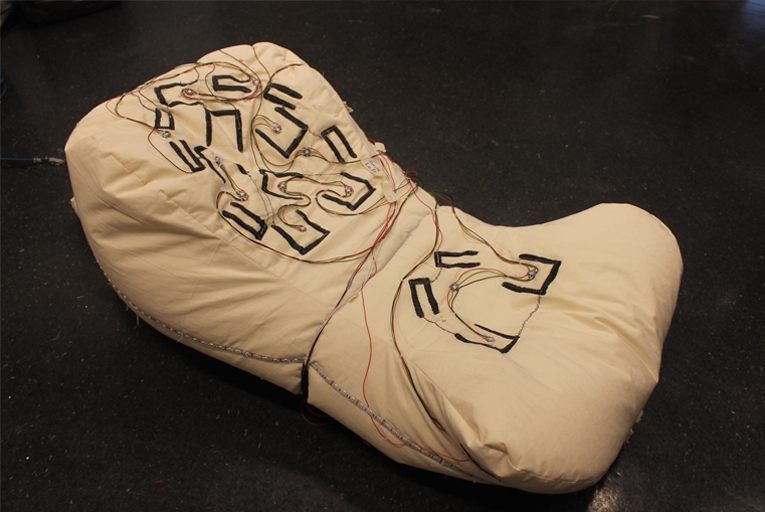
Because people will be sitting on the beanbag it is necessary that you won’t be able to feel any of the electronics while sitting. Besides that, it is also very important that the electronics can handle big pressures, moving and bending. To sense if someone is sitting on the Ditto, we used conductive paint and conductive thread. With a combination of these two materials, we were able to create touch sensors that sense body capacitance. We have also programmed the touch pads so that it works as a proximity sensor, meaning that they can even function through several layers of cloth. We’ve painted certain areas with the conductive paint and used the conductive thread to make it stronger and connect some of the areas, so that they sense as one. The conductive thread is also connected to the wires that send the data to a microcontroller.
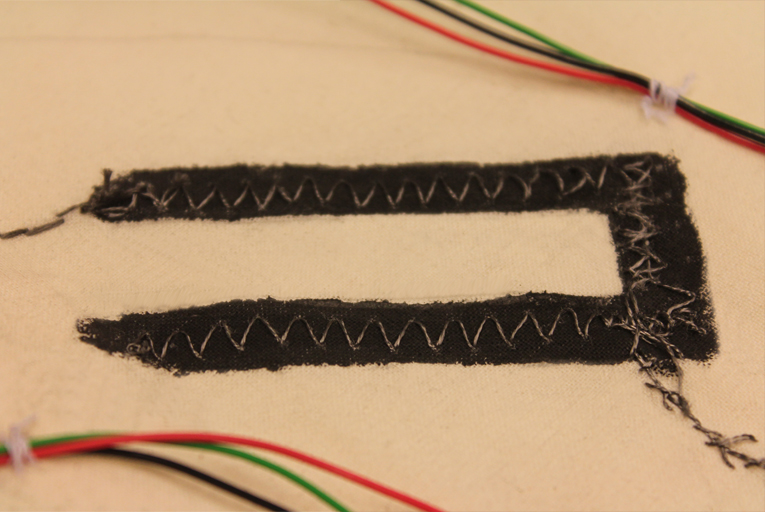
The lights that will create the silhouette in the Ditto are individual LEDs that can be sewn on fabric. Small groups of single LEDs are placed in a pattern and respond as a group to the connected touch sensors within the same area.
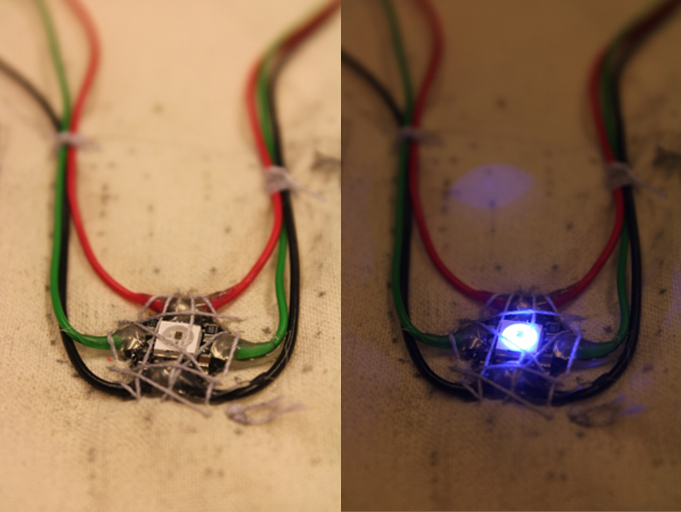
The pulsing light line at the bottom of the Ditto is created with a led strip that goes around the whole Ditto. The frequency of the pulsing is a result of the collected data of the microphone in the other Ditto.
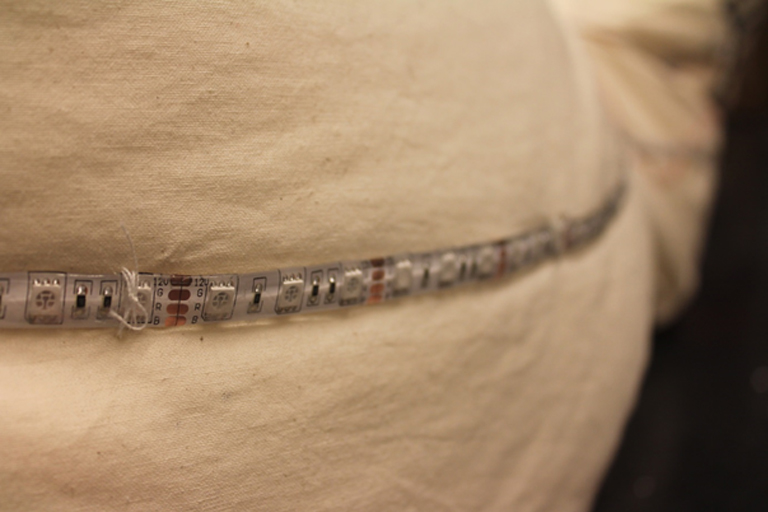

To process all the collected data of the sensors and send outputs to the lights and heating pads, we use an Arduino Uno. For wireless communication between the two Dittos we use XBee’ss.
To protect these components, we’ve created a small box in which we fixed them in place. This box provides the opportunity to structure the wires and to create some stress relief for the wires and the (soldered) connections.
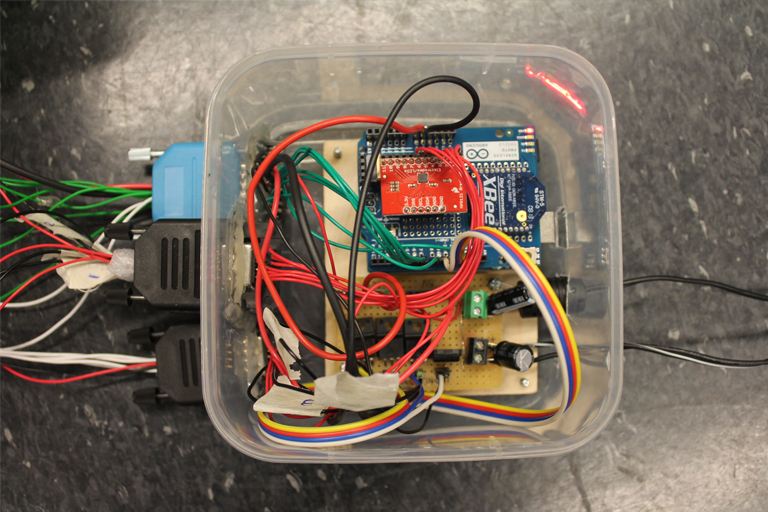
These electronics all seem very nice, but as long as there is no power, nothing will happen. That’s why we have two adapters per Ditto. One is for 12V and one is for 5V. This is because the LED strip on the bottom and the heating pads need 12V, while the single LEDs on the top and the Arduino need 5V. We’ve managed to integrate these two adapters into one power cable.
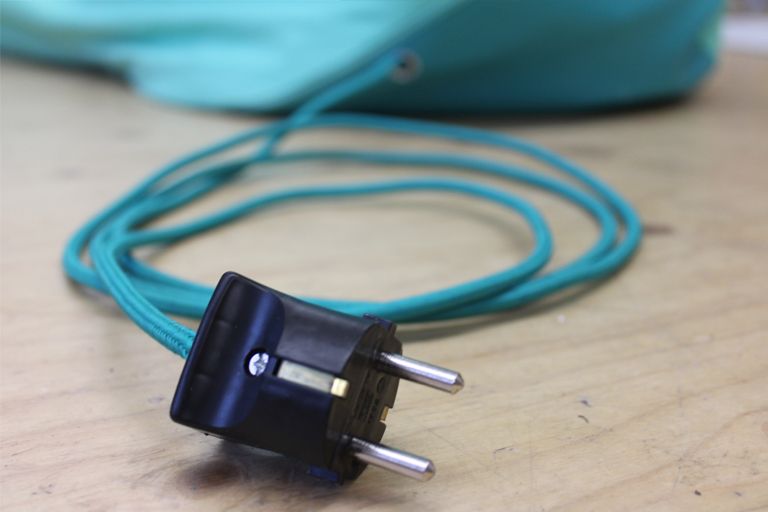
To protect all of the lights and sensors and to make sure that you won’t feel them while sitting on the Ditto, there is a foam layer which encloses the inner electronics layer, which can be opened and closed with plastic snaps. We made this layer using memory foam. We chose for this type of foam because the light can shine through and is flexible, soft and bacteria and fire resistant.
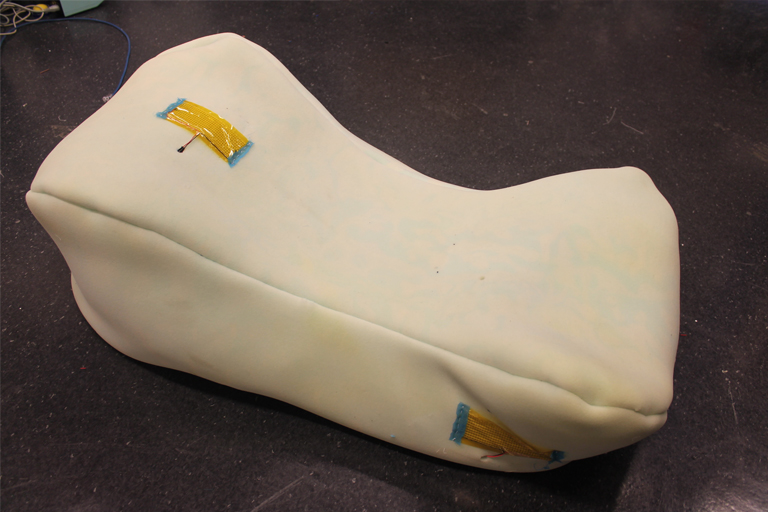
On top of the foam layer, the heating pads are placed. We’ve chosen to put the heating pads on the foam layer (instead of underneath it with the other electronics) because the warmth has to be sensed all the way to the final outer layer of the Ditto. The heating pads are sewn onto the foam and their wire immediately goes underneath the foam through a hole, so that you won’t feel it. The heating pad itself won’t be noticeable because it is very thin and flexible.
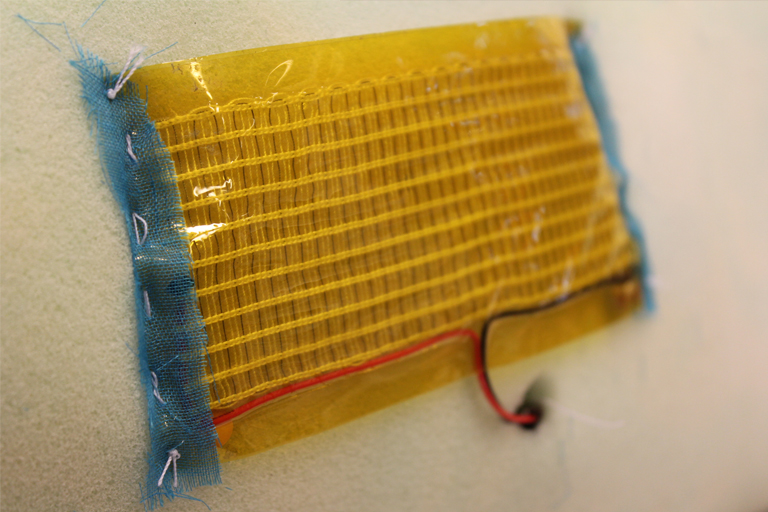
Next to the heating pads, also the microphones are placed on this foam layer. There are on top of the foam because they would be too isolated from sound if they would be placed underneath the foam.
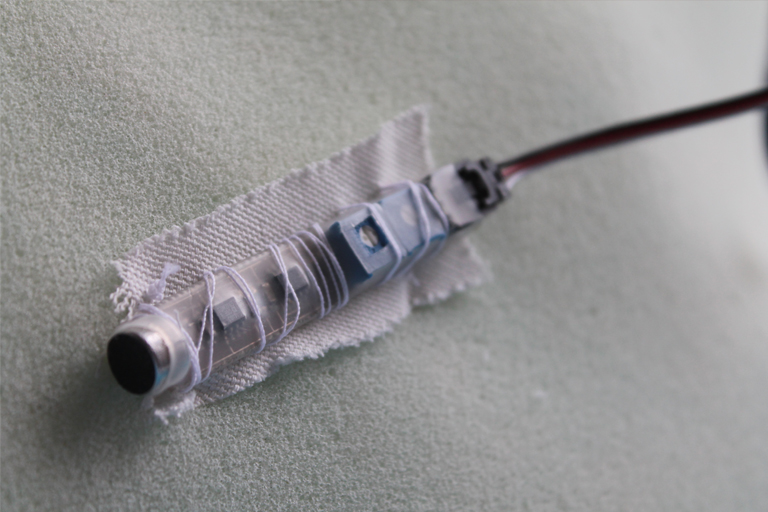
The outer layer of the Ditto is made out of canvas, which we dyed in the color we designed. We chose canvas because it’s non-dust-collecting, soft, strong, durable, cheap and easily accessible, while letting the light through. On this cloth we’ve sewed a pattern which indicates the locations of the interactive areas, which are the back, seat, and hand patches.
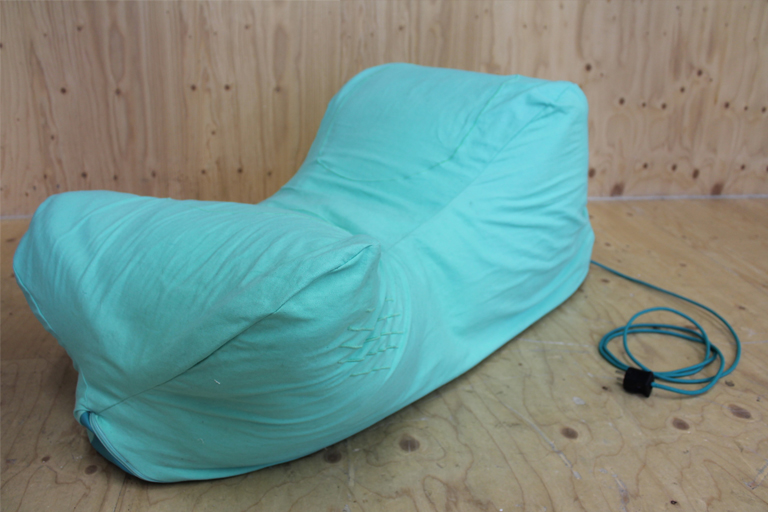
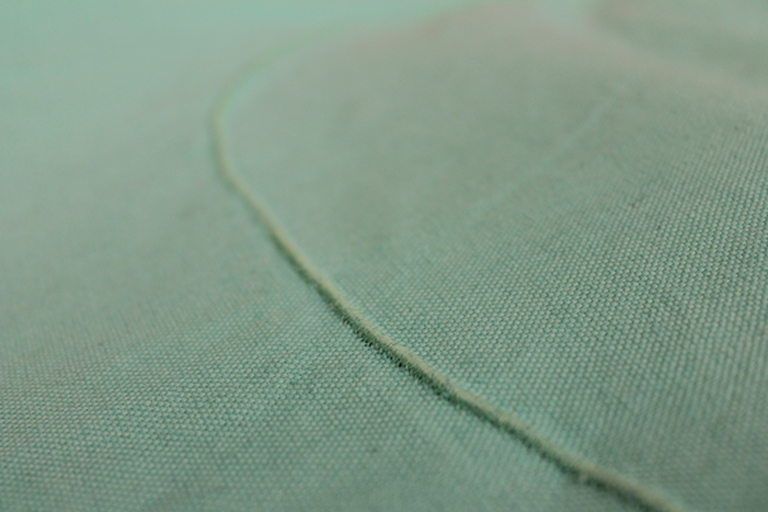
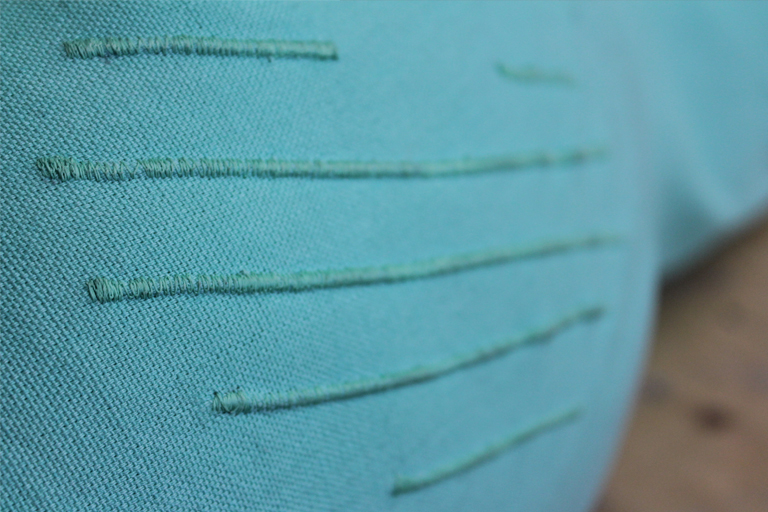
The Dittos have a (fake) leather bottom, called Boltaflex Vinyl. It’s a non-dust-collecting, flexible, and bacteria and stain resistant material. We chose for this so that the bottom is more durable and it’s clear for the users which side of the Ditto should be on the ground.
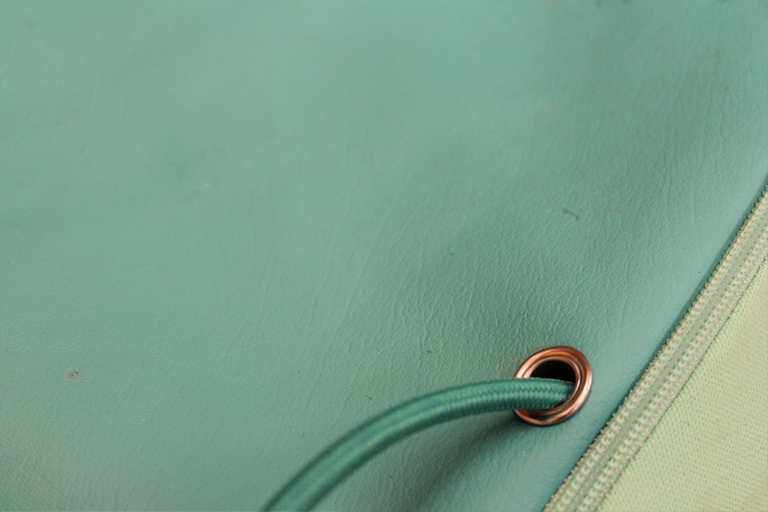
To design the shape of the Ditto, we created several versions and iterations of both small scale and real scale models for testing. By asking fellow students, our instructors, children, and the children’s parents to sit on the shapes, we were able to find the perfect balance between ergonomics and beauty.
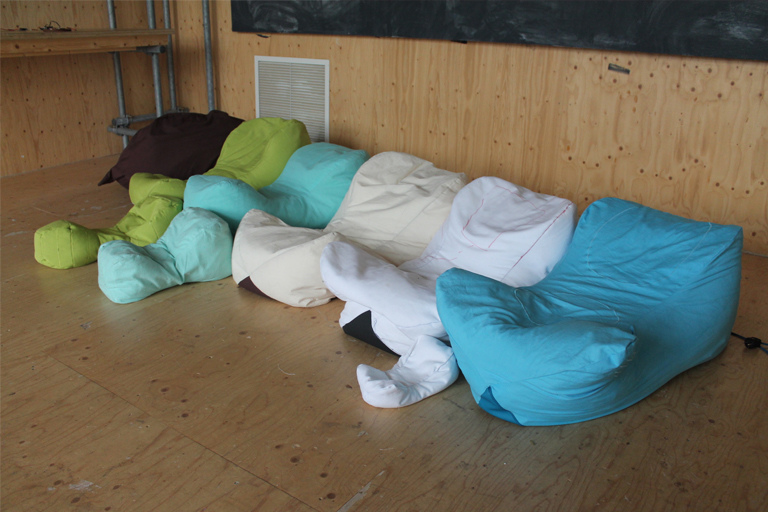
Team
Ditto was designed and constructed by the following students (from left to right): Isabelle Kim, Bob Verheij, Elan Redekop van der Meulen, Mithun Martin Mendez, Bo Gall, Bart Krijgsman and Gwenda Gieseler.
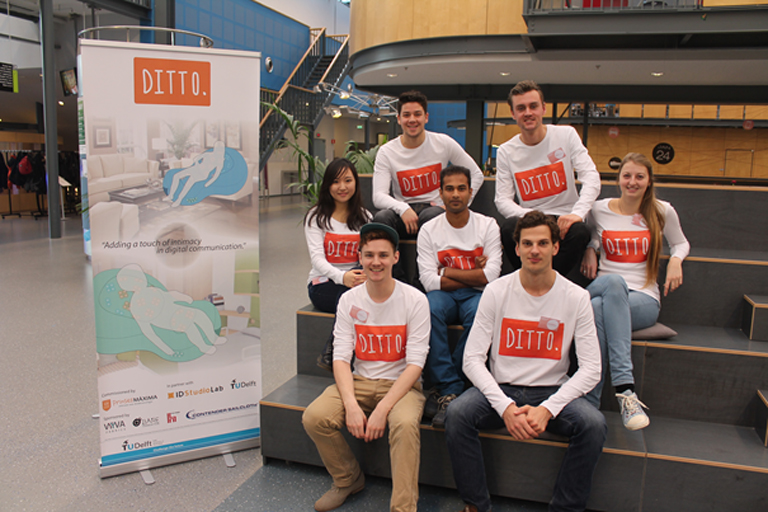
The project was also made possible with the support of the Science Centre and our instructors Aadjan van der Helm, Marco Rozendaal and Chris Kievid.
Commisioned by the Prinses Máxima Centrum voor Kinderoncologie.
Partners:
TU Delft
ID-StudioLab
Sponsors:
Bare Conductive
Vyva fabrics
Hordijk
Contender Sailcloth
Reinier de Graaf hospital.
With special thanks to:
Dieter Vandoren
Lorenzo Romagnoli
Rob Luxen
